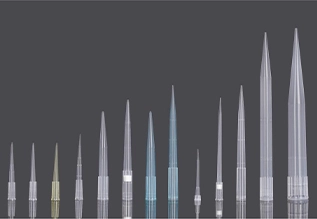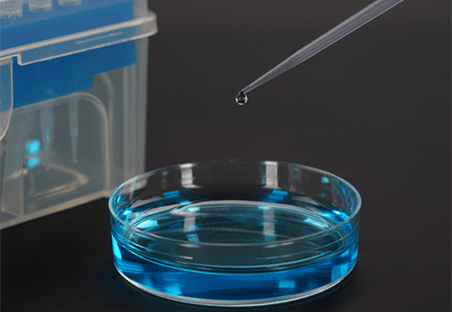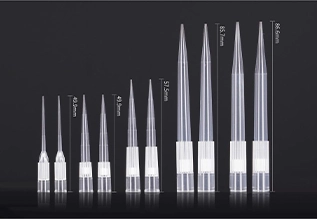Disposable pipette tips are a cornerstone of accurate and efficient liquid handling in laboratories across various fields. These seemingly simple plastic components play a crucial role in ensuring data integrity, preventing contamination, and promoting safety. In this guide, we’ll delve into the things you need to know about disposable pipette tips, from their types and uses to best practices and environmental considerations.
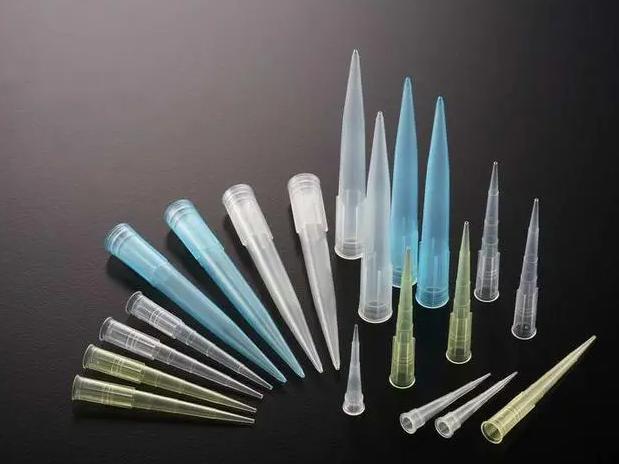
What are Disposable Pipette Tips?
Disposable pipette tips are conical-shaped, small, disposable attachments used with pipettes for the precise measurement and transfer of liquids in laboratory settings. They are typically made of either polypropylene or other plastics and come in various sizes to accommodate different pipette volumes. The tip’s design ensures a snug fit onto the pipette, preventing leaks and contamination during liquid handling procedures.
Types of Disposable Pipette Tips
Disposable pipette tips come in various types, each designed to meet specific laboratory needs and applications. Here are some common types of disposable pipette tips:
- Standard Tips:
Standard disposable pipette tips are the most commonly used type and are suitable for general liquid handling tasks. They are available in a wide range of sizes to accommodate different pipette volumes and are compatible with various pipette brands. Common volumes of standard pipette tips typically include:
- 10 µl: These tips are suitable for low-volume applications such as PCR setup, serial dilutions, and small volume transfers.
- 20 µl: Similar to 10 µl tips, 20 µl tips are commonly used for low-volume liquid handling tasks in molecular biology, biochemistry, and microbiology laboratories.
- 200 µl: These tips are versatile and widely used for general liquid handling tasks, including sample aliquoting, buffer preparation, and enzymatic assays.
- 300 µl: Suitable for medium-volume applications, 300 µl tips are commonly used in cell culture, microbiology, and clinical diagnostics laboratories.
- 1000 µl (1 ml): These tips are designed for high-volume liquid transfers, such as media preparation, sample reconstitution, and bulk pipetting.
- 1250 µl (1.25 ml): Similar to 1000 µl tips, 1250 µl tips are used for high-volume liquid handling tasks in various laboratory settings.
- 5000 µl (5 ml): Large-volume tips like 5000 µl are used for pipetting volumes greater than 1 ml, such as sample dilution, media dispensing, and solution transfer in industrial and research laboratories.

Scopelab as a professional pipette tips supplier in China, can provide you 3 types of pipette tips: Universal Pipette Tips, CLT Pipette Tips, Rainin Pipette Tips. All of these tips are made with polypropylene material, High-quality, with high transparency, and under GMP standard production. Volumes from 10ul to 5ml, with different specifications and packaging requirements. Please feel free to contact Scopelab for any of you needs.

- Filter Tips:
Filter tips feature built-in filters, usually made of hydrophobic material such as polyethylene (PE), polypropylene (PP), or porous materials like porous polytetrafluoroethylene (PTFE). These filters prevent aerosols, contaminants, and liquids from entering the pipette shaft, reducing the risk of sample cross-contamination and pipette contamination. Filter tips are ideal for applications involving sensitive samples, such as PCR, RNA/DNA isolation, and cell culture.
- Low-Retention Tips:
Low-retention tips are designed to minimize liquid adhesion to the inner surface of the tip, thereby reducing sample loss and ensuring maximum sample recovery. These tips are particularly useful when working with viscous or low-volume samples, where sample retention can lead to inaccurate volume measurements. Low-retention tips are commonly used in molecular biology, genomics, and proteomics applications.
- Extended Length Tips:
Extended length tips feature a longer tip shaft compared to standard tips, allowing for easier access to deep or narrow containers, such as tubes and microplates. They are often used in applications where precise dispensing into small vessels or wells is required, such as high-throughput screening, microarray spotting, and liquid handling automation.
- Specialty Tips:
Specialty disposable pipette tips are designed for specific laboratory applications or unique sample types. Examples include tips with conductive properties for electrostatically sensitive samples, tips with ultrafine points for precise dispensing, and tips with beveled or tapered ends for cell manipulation and microinjection techniques.
- Low-Retention Filter Tips:
Combining the features of low-retention and filter tips, low-retention filter tips offer enhanced sample protection and minimal sample loss. They are ideal for applications requiring both reduced sample adhesion and contamination prevention, such as PCR, qPCR, and Next-Generation Sequencing (NGS).
These are just a few examples of the types of disposable pipette tips available in the market. When selecting the appropriate type of pipette tip for your laboratory needs, consider factors such as sample type, application requirements, and compatibility with your pipettes.
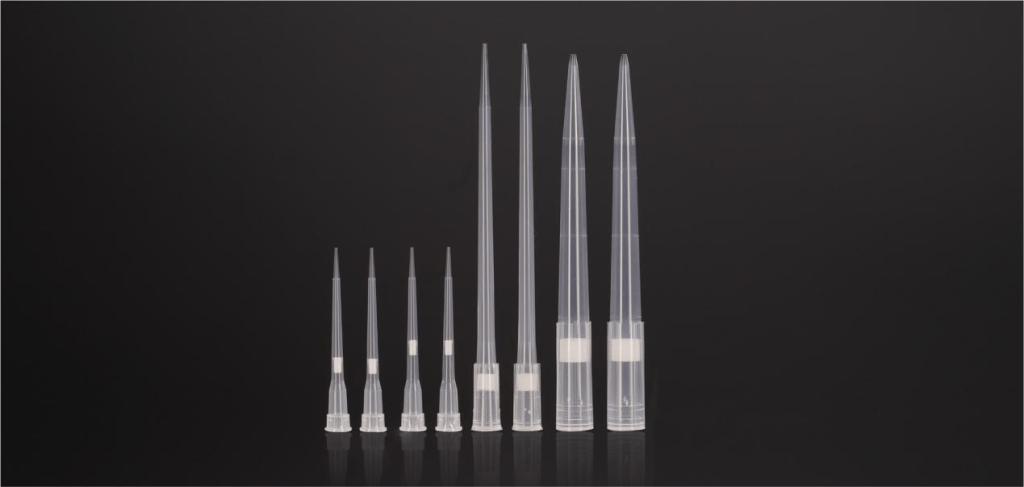
Usage of disposable pipette tips
Disposable pipette tips are indispensable tools in laboratory settings, serving a variety of purposes across different disciplines. Their usage spans a wide range of applications, including:
- Sample Aliquoting:
Disposable pipette tips are commonly used for transferring precise volumes of liquid samples from one container to another. This is essential in tasks such as sample preparation, dilution series, and reagent dispensing.
- PCR (Polymerase Chain Reaction):
In PCR workflows, where small volumes of nucleic acid samples, primers, and enzymes are combined in multi-step reactions, disposable pipette tips are used for accurate and contamination-free liquid handling. Proper pipetting techniques and sterile tips are crucial for reliable PCR results.
- Cell Culture:
Maintaining cell cultures often involves transferring cells, media, and reagents between culture vessels. Disposable pipette tips ensure sterile and precise liquid handling, minimizing the risk of contamination and maintaining cell viability.
- Biochemical Assays:
Various biochemical assays, such as enzyme assays, immunoassays, and ELISAs (Enzyme-Linked Immunosorbent Assays), rely on precise measurement and mixing of reagents. Disposable pipette tips facilitate accurate dispensing and prevent cross-contamination between samples.
- Molecular Biology:
Techniques such as DNA/RNA isolation, purification, and quantification require precise handling of nucleic acid samples and reagents. Disposable pipette tips minimize the risk of sample carryover and ensure the integrity of genetic material during these procedures.
- Microbiology:
In microbiology laboratories, where cultures, media, and microbial samples are handled, disposable pipette tips are used for aseptic transfer of liquids to prevent contamination between samples and culture plates.
- Clinical Diagnostics:
In clinical laboratories, where patient samples are tested for various analytes and pathogens, disposable pipette tips are used for precise dispensing of reagents and samples in diagnostic assays, such as immunoassays, blood typing, and serological tests.
- Liquid Handling Automation:
High-throughput screening and automated liquid handling systems rely on disposable pipette tips for accurate and reproducible sample handling. These systems utilize robotic pipettors equipped with disposable tips to perform complex liquid handling tasks efficiently.
Overall, disposable pipette tips play a critical role in ensuring accurate, reproducible, and contamination-free liquid handling across a wide range of laboratory applications, contributing to the reliability and integrity of scientific research and diagnostics.
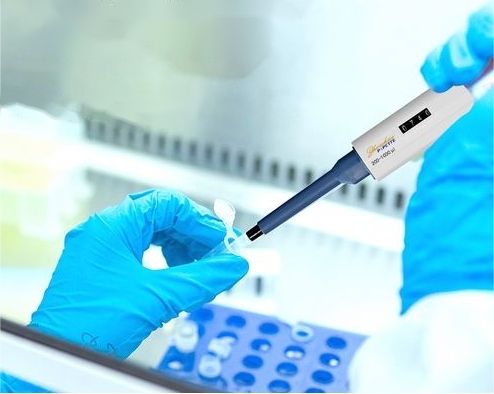
Advantages of Disposable Pipette Tips
Disposable pipette tips offer several advantages over reusable alternatives, making them a preferred choice in laboratory settings. Here are some of the key advantages:
- Contamination Prevention:
One of the primary advantages of disposable pipette tips is their ability to prevent cross-contamination between samples. Since disposable tips are discarded after each use, the risk of carryover contamination from one sample to another is significantly reduced, ensuring the integrity of experimental results.
- Time Efficiency:
Disposable pipette tips save valuable time in the laboratory by eliminating the need for cleaning and sterilization between uses. Researchers can focus on their experiments without the downtime associated with washing and autoclaving reusable tips, thereby increasing workflow efficiency.
- Reduced Risk of Sample Loss:
Disposable pipette tips are designed to minimize liquid retention, ensuring maximum sample recovery and reducing the risk of sample loss. This is particularly important when working with precious or limited-volume samples, where even small losses can impact the experimental outcome.
- Compatibility and Convenience:
Disposable pipette tips are compatible with a wide range of pipettes from different manufacturers, providing versatility and convenience in the laboratory. Users can easily switch between tip sizes and types without the need for additional equipment or adjustments.
- Consistency and Reproducibility:
Using disposable pipette tips helps maintain consistent and reproducible results across experiments by minimizing variability introduced by manual cleaning and handling of reusable tips. This is critical for ensuring the reliability and validity of scientific research and diagnostic assays.
- Reduced Risk of Pipette Damage:
Repeated autoclaving and cleaning of reusable pipette tips can lead to wear and damage over time, affecting their performance and accuracy. Disposable pipette tips eliminate the risk of damage associated with cleaning and sterilization, ensuring optimal pipetting performance with each use.
- Cost-Effectiveness:
While disposable pipette tips have an upfront cost, they can be more cost-effective in the long run compared to reusable tips. When factoring in the time and resources required for cleaning, sterilization, and potential replacement of reusable tips, disposable tips often offer a more economical solution for laboratory liquid handling needs.
- Sterility Assurance:
Disposable pipette tips are manufactured under stringent quality control measures and are typically supplied in sterile packaging. This ensures that each tip is free from contaminants and ready for immediate use in aseptic laboratory procedures, such as cell culture and molecular biology applications.
Overall, the advantages of disposable pipette tips, including contamination prevention, time efficiency, sample integrity, compatibility, consistency, and cost-effectiveness, make them indispensable tools in modern laboratory workflows.
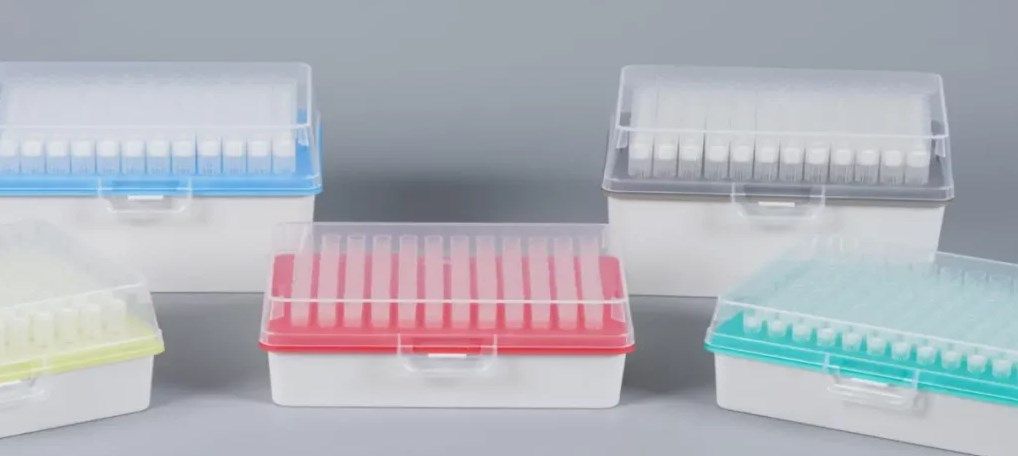
How to Use Disposable Pipette Tips?
Mastering the proper use of disposable pipette tips is essential for obtaining accurate and reproducible results in the laboratory. Follow these guidelines for optimal performance:
Best Practices for Using Disposable Pipette Tips
Using disposable pipette tips correctly is crucial for obtaining accurate and reproducible results in laboratory experiments. Here are some best practices for using disposable pipette tips:
- Selecting the Right Tip: Ensure that the pipette tip you choose is compatible with your pipette model and suitable for the volume you intend to pipette. Using the correct tip size and type minimizes the risk of inaccuracies and ensures optimal performance.
- Proper Tip Attachment: Before pipetting, ensure that the pipette tip is securely attached to the pipette shaft. Press the tip firmly onto the pipette until it clicks into place to prevent leaks and ensure a tight seal.
- Priming the Pipette: Prime the pipette tip by aspirating and dispensing the liquid once or twice before transferring samples. This helps ensure that the pipette tip is filled with the liquid and eliminates any air bubbles, resulting in accurate volume delivery.
- Avoiding Over-Pipetting: Do not pipette liquid beyond the tip’s maximum volume capacity. Over-pipetting can lead to liquid getting into the pipette shaft, contaminating the pipette and affecting subsequent measurements. Always check the volume markings on the pipette and adjust accordingly.
- Maintaining Proper Technique: Maintain a steady hand and consistent pipetting technique throughout the procedure. Hold the pipette vertically when aspirating and dispensing to ensure accurate volume measurement and minimize liquid splashing or dripping.
- Preventing Tip Touch Contamination: Avoid touching the pipette tip to any surface, including the inside of the container or the walls of the receiving vessel, as this can lead to contamination. Instead, hold the pipette tip slightly above the liquid surface to aspirate and dispense samples.
- Changing Tips Between Samples: Change pipette tips between samples to prevent cross-contamination. Discard used tips promptly into a designated waste container and use a new, sterile tip for each sample or reagent transfer.
- Avoiding Aerosol Formation: To minimize the risk of aerosol formation, especially when pipetting volatile or hazardous liquids, pipette slowly and gently. Additionally, use filter tips or low-retention tips to prevent liquid aerosols from entering the pipette shaft.
- Storage and Handling: Store disposable pipette tips in their original packaging or in a clean, dry environment to prevent contamination. Handle tips carefully to avoid damage or deformation, which can affect their performance and accuracy.
- Regular Maintenance and Calibration: Regularly inspect the pipette and tips for any signs of damage or wear. Calibrate the pipette according to manufacturer guidelines to ensure accurate volume measurement.
By following these best practices for using disposable pipette tips, laboratory personnel can minimize errors, ensure sample integrity, and achieve reliable and reproducible results in their experiments.

Common Issues and Troubleshooting
Despite their convenience and widespread use, disposable pipette tips can sometimes encounter issues that affect their performance. Here are some common issues associated with disposable pipette tips and troubleshooting tips to address them:
| Common Issues | Troubleshooting |
| Tip Leaks | Ensure secure attachment of the pipette tip to the shaft. |
| Inspect the tip for cracks or damage and replace if necessary. | |
| Verify that the liquid being aspirated does not exceed the tip’s maximum volume capacity. | |
| Inconsistent Volume Delivery | Check pipette calibration and recalibrate if necessary. |
| Use proper pipetting technique, including priming the tip and holding the pipette vertically. | |
| Ensure liquid level aligns with the desired volume marking on the pipette tip. | |
| Contamination | Work in a clean, designated area and use sterile tips. |
| Avoid touching the tip to any surface to prevent contamination. | |
| Change tips between samples and discard used tips promptly. | |
| Sample Retention | Use low-retention tips designed to minimize liquid adhesion. |
| Pipette slowly and smoothly to ensure complete dispensing. | |
| Avoid aspirating air bubbles or liquid droplets into the tip. | |
| Tip Compatibility Issues | Ensure tips are compatible with the pipette model being used. |
| Use tips from reputable manufacturers known for quality and compatibility. |
By addressing these common issues and implementing appropriate troubleshooting steps, laboratory personnel can ensure optimal performance and reliability when using disposable pipette tips in their experiments.
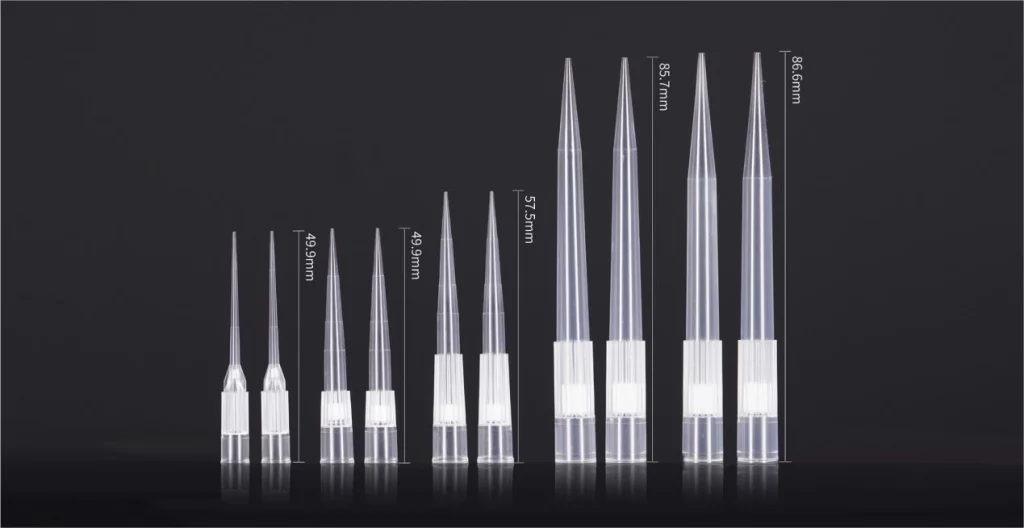
Considerations about Disposable Pipette Tips
When selecting disposable pipette tips for your laboratory, several factors should be taken into account:
Choosing Disposable Pipette Tips Considerations
When selecting disposable pipette tips for laboratory use, several factors should be considered to ensure compatibility, performance, and cost-effectiveness. Here are some key factors to consider when choosing disposable pipette tips:
- Pipette Compatibility:
Ensure that the disposable pipette tips you choose are compatible with the pipettes used in your laboratory. Different pipette models may have varying tip attachment mechanisms and requirements, so it’s essential to select tips that fit securely and provide a tight seal to prevent leaks and inaccuracies.
- Sample Type and Volume:
Consider the type of samples you will be handling and the volume range required for your experiments. Different tip types and sizes are suitable for various sample types and volumes, so choose tips that meet the specific needs of your applications, whether it’s low-volume PCR reactions or high-volume liquid transfers.
- Quality and Performance:
Choose disposable pipette tips from reputable manufacturers known for their quality and consistency. Look for tips manufactured using high-quality materials and precision molding techniques to ensure reliable performance and accurate volume delivery. Read customer reviews and seek recommendations from colleagues to assess the performance of different tip brands.
- Specialty Applications:
If you have specialized laboratory applications or unique sample handling requirements, consider specialty disposable pipette tips designed for specific purposes. These may include filter tips for preventing aerosols and contamination, low-retention tips for minimizing sample loss, or extended length tips for accessing deep or narrow containers.
- Sterility and Quality Assurance:
Ensure that the disposable pipette tips are supplied in sterile packaging and manufactured under stringent quality control standards. Sterile tips are essential for aseptic laboratory procedures, such as cell culture and molecular biology applications, to prevent contamination and ensure the integrity of experimental results.
- Environmental Impact:
Consider the environmental impact of disposable pipette tips and opt for eco-friendly options when possible. Look for tips made from recyclable materials or those certified as biodegradable to minimize plastic waste generation. Additionally, choose tips packaged in minimal or recyclable packaging to reduce environmental footprint.
- Cost-Effectiveness:
Evaluate the cost-effectiveness of disposable pipette tips based on your laboratory budget and usage volume. While cheaper options may seem attractive initially, investing in higher-quality tips from reputable manufacturers can result in better performance, reliability, and overall cost savings in the long run by reducing the need for rework and repeat experiments.
- Bulk Purchasing Options:
Consider purchasing disposable pipette tips in bulk quantities to take advantage of volume discounts and reduce procurement costs. Many suppliers offer bulk packaging options, such as refill racks or bulk bags, which can help lower the cost per tip and ensure a steady supply for your laboratory needs.
By carefully considering these factors when choosing disposable pipette tips, laboratory personnel can select the most suitable options for their specific applications, ensuring optimal performance, reliability, and cost-effectiveness in liquid handling workflows.

Environmental Impact and Sustainability Considerations
When considering the environmental impact and sustainability of disposable pipette tips, several factors come into play. Here are some key considerations:
- Material Composition:
The choice of materials used in manufacturing disposable pipette tips can significantly impact their environmental footprint. Opting for tips made from recyclable materials, such as polypropylene (PP) or polyethylene (PE), can facilitate recycling at the end of their lifecycle, reducing the amount of plastic waste sent to landfills.
- Biodegradability:
Some manufacturers offer disposable pipette tips that are certified as biodegradable, meaning they can decompose naturally over time without leaving harmful residues in the environment. Biodegradable tips can help mitigate the environmental impact of plastic waste and contribute to more sustainable laboratory practices.
- Packaging:
Consider the packaging materials used for disposable pipette tips, as excessive packaging can contribute to environmental waste. Choose tips packaged in minimal or recyclable packaging to reduce the overall environmental footprint. Additionally, explore bulk purchasing options to minimize packaging waste and transportation emissions.
- Recycling Programs:
Investigate whether the manufacturer or supplier offers recycling programs for used disposable pipette tips. Some companies provide collection and recycling services for used tips, allowing laboratories to return used tips for recycling into new products. Participating in these programs can help divert plastic waste from landfills and promote a circular economy for laboratory plastics.
- Energy Consumption:
Consider the energy consumption associated with the production and disposal of disposable pipette tips. Choose tips manufactured using energy-efficient processes and from suppliers committed to reducing their carbon footprint. Additionally, explore options for energy-efficient disposal methods, such as waste-to-energy facilities or recycling processes with low energy requirements.
- Lifecycle Analysis:
Conduct a lifecycle analysis to assess the environmental impact of disposable pipette tips from production to disposal. Consider factors such as raw material extraction, manufacturing processes, transportation, use phase, and end-of-life disposal. By understanding the full lifecycle of disposable pipette tips, laboratories can identify opportunities for improvement and implement more sustainable practices.
- Reuse and Reduction Strategies:
Explore opportunities to reduce the use of disposable pipette tips through reuse and reduction strategies. Consider implementing practices such as sample pooling, multi-sample pipetting, or optimizing experimental protocols to minimize the number of tips used per experiment. Additionally, encourage proper tip handling and storage to extend their lifespan and reduce unnecessary waste generation.
- Environmental Certifications:
Look for disposable pipette tips certified with environmental labels or certifications, such as the Sustainable Green Chemistry Seal or the Cradle to Cradle certification. These certifications indicate that the product meets specific environmental criteria, such as reduced toxicity, resource conservation, and recyclability.
By considering these environmental impact and sustainability considerations when choosing and using disposable pipette tips, laboratories can minimize their ecological footprint and contribute to more sustainable laboratory practices.
Conclusion
Disposable pipette tips are indispensable tools in the modern laboratory, facilitating precise and contamination-free liquid handling for a wide range of applications. By understanding their types, uses, and best practices, researchers can ensure reliable and reproducible results in their experiments. Additionally, considering factors such as compatibility, quality, and environmental impact can help laboratories make informed decisions when selecting disposable pipette tips. Ultimately, by adhering to proper usage guidelines and environmental considerations, scientists can optimize their laboratory workflows while minimizing their ecological footprint.
